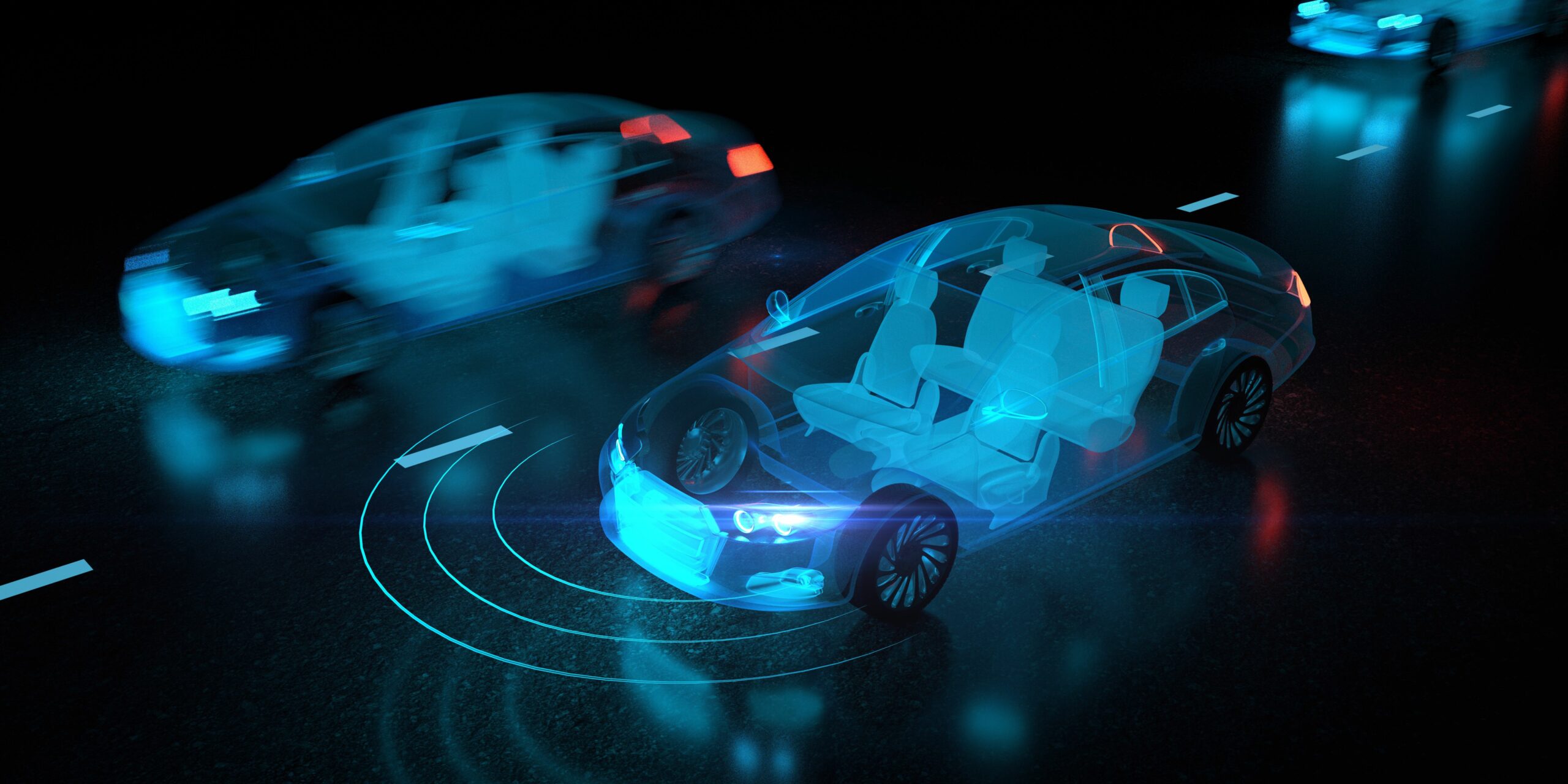Autonomous Vehicles and AI are two rapidly advancing technologies that are transforming the transportation industry. Self-driving cars are equipped with a variety of sensors and machine learning algorithms that enable them to navigate roads, avoid obstacles, and make decisions based on real-time data. This technology has the potential to revolutionize the way we travel, reducing accidents, traffic congestion, and emissions. Autonomous Vehicles and AI also have implications for various industries, including logistics, delivery, and public transportation. As the technology continues to improve, the possibilities for Autonomous Vehicles and AI are endless.
Where are Autonomous Vehicles Now?

Statistics say that more than 90% of traffic collisions are the result of human mistakes. Autonomous vehicles have a lot of potential because they can revolutionize or highways and make driving more safer Many automakers made significant intentions to put fully autonomous commercial vehicles on the road. However, they opted for a different path instead. Though it was a thrilling time for the industry, the hype had already outpaced the truth.
It is important to ask what actual strides have been made toward a completely autonomous vehicle, then? The widely used degrees of driving automation established by SAE are useful for measuring development.
From Level 0 (no driving automation) through Level 5, there are five levels of automation (full driving automation).
- Level 0: No autonomy
- First Level: Minimal driving support
- Second level: Limited automation
- Third level: Conditional automation
- Fourth level: High automation
- Fifth level: Completely automated (self-driving car)
At the time being, the majority of vehicles sold are at least Level 1, which includes a few driver assistance systems. This could include adaptive cruise control or lane assist.
Tesla Autopilot is at Level 2, which means the vehicle may control speed and steering, but the driver must remain be alert and prepared to take the wheel.
In March 2021, Honda debuted the Legend Sedan, a car that has attained Level 3. Level 3 vehicles allow the driver to relinquish control, but only under extremely precise circumstances.
In Level 4, a few businesses are making progress, such as GM, Daimler, and Google. For instance, Google Waymo has completely autonomous vehicles that operate inside a geofenced area.
Between 2024 and 2025, we expect to see this technology become used. There are currently no Level 5 vehicles available on the market. This is because businesses have postponed deployment plans in light of the enormous difficulties that come with complete autonomy.
By increasing the levels of autonomy, this more steady progression has the advantage of fostering consumer trust.
It’s hard to predict when the driverless car revolution will occur. Rather than making more predictions that are not going to come true, it’s more crucial to concentrate on overcoming the obstacles in the way.
How Does AI Work in Autonomous Vehicles?

Nowadays, AI has become a buzzword, but how does it function in autonomous vehicles? We use sensory faculties like vision and hearing to observe the road and other vehicles. Observing this allows us to examine the human perspective of operating a vehicle.
We use our memories to quickly decide whether to stop at a red light or wait for a person to cross the street. Years of driving experience train us to scan the road for tiny things, such as a bigger bump in the road or a better route to the workplace.
While we are developing autonomous vehicles, we want them to operate similarly to human drivers. Thus, it is necessary to provide these machines with the sensory, cognitive, and executive processes that people use while operating motor vehicles. For the past few years, the automotive industry has been changing to accomplish this.
The Growth of AI in Automotive
According to reports, the automotive AI industry will grow a CAGR of $783 million in 2017 to $11 million by 2025. IHS Markit anticipated that the installation rate of AI-based technologies in new vehicles would increase by 109% in 2025.
AI-based technologies, particularly in these two categories, will become the norm in modern vehicles.
- Human-machine interaction for infotainment systems. This includes speech and gesture recognition, eye tracking, driver monitoring, virtual assistance, and natural language interfaces.
- Advanced Driver Assistance Systems (ADAS) and autonomous vehicles. This incorporates sensor-fusion engine control units, radar-based detection units, camera-based machine vision systems, and driver condition evaluation (ECUs).
Many predict that deep learning technology with dominate the automotive AI market. Deep learning is a method of implementing machine learning: an approach to creating AI. It is now utilized in autonomous vehicles for voice recognition, voice search, sentiment analysis, recommendation engines, picture recognition, and motion detection.
What Are The Benefits Of Autonomous Vehicles?

Autonomous vehicles represent a significant advancement both technologically and practically. Everything needed to ease and speed up our daily work is already installed into these cars.
With autonomous vehicles:
- Businesses that run them can function continuously throughout the year can save time and money
- Less accidents occur overall. This is because AI algorithms are never tired, intoxicated, or sleepy.
The use of autonomous vehicles is now widespread. This initiative is still in the planning stages. This is because autonomous vehicles are illegal to drive on public roads in many nations. Yet, it’s only a short-term issue. The legislation will need to alter to reflect how technology is developing and spreading.
What Are The Challenges With Autonomous Vehicles?
Some regions of the world are testing fully autonomous (Level 5) vehicles. However, none are presently accessible to the general public. Years will pass before that happens.
The difficulties range from legal and technological to environmental and philosophical. Below are a few of the unanswered questions.
Radar and Lidar
Lidar is pricey and is working to find the ideal ratio of range to resolution. It is fair to ask if lidar signals from different autonomous vehicles on the same route clash with one another. Or if the frequency range will be large enough to facilitate the mass production of autonomous automobiles if many radio frequencies are available.
Weather Changes
What happens when a self-driving car travels through a lot of rain? When it snows, it is a completely different issue. When snow is heavy, it covers the lane markers on the road. If water, grease, ice, or debris cover these markers, how will the cameras and sensors be able to follow them?
Laws and Traffic Conditions
Would driverless vehicles encounter difficulties on bridges or in tunnels? How will they perform in heavy traffic? Can autonomous vehicles only drive in a particular lane? Will they be able to use the carpool lane? And what about the fleet of vintage vehicles that will continue to circulate on the roads for the next 20 or 30 years?
Federal vs. State Regulation
Now, state-by-state regulations have replaced federal guidelines. The predominant mode of regulation for autonomous vehicles in the US currently is now. To stop the rise of “zombie cars” roaming the streets without occupants, some jurisdictions have even suggested a per-mile charge on autonomous vehicles.
Proposals have been put forward by lawmakers, mandating panic buttons and zero-emission status for all autonomous vehicles. However, will the legislation differ between states, and is it permissible to operate an autonomous vehicle across state borders?
Injury Liability
Who is responsible for accidents brought on by autonomous vehicles? Who is the producer and the traveling individual?
In the latest designs, a human passenger would not have the choice to assume control of the vehicle in case of an emergency, as a fully autonomous Level 5 car will not possess a steering wheel or a dashboard.
Emotional vs. Artificial Intelligence
Human drivers depend on subtle cues and nonverbal communication to make quick judgments and anticipate behaviors. This includes making eye contact with pedestrians and interpreting the body language and facial expressions of other drivers.
Can self-driving cars replicate this connection and exhibit the same life-saving instincts as human drivers?
Machine learning algorithms used by self-driving cars
There are many different kinds of algorithms that are used on autonomous vehicles. Here are some notable ones:
- SIFT algorithms analyze images and find things. The three points of a triangular symbol, for instance, are entered as features. With those points, an automobile can then quickly detect the sign.
- AdaBoost for classification of data. To improve vehicle performance and learning, this program gathers and categorizes data. To create a single high-performing classifier for better decision-making, it brings together various low-performing classifiers.
- TextonBoost to recognize objects. Similar to AdaBoost, the TextonBoost method enhances learning using textons by using data from shape, context, and appearance (micro-structures in images). It also compiles visual data with recurring elements.
- Oriented gradients histogram (HOG). HOG makes it easier to analyze a cell—the location of an object—to determine how it shifts or moves.
- YOLO (You Only Look Once) (You Only Look Once). Objects including people, plants, and automobiles are detected and grouped by this algorithm. To make objects easier for the automobile to recognize, it gives distinct traits to each class of object that it groups. For classifying and identifying items, YOLO works well.
Artificial intelligence in self-driving cars: examples
We’ve selected three outstanding instances of autonomous vehicles in action to demonstrate to you that this technology is already available.
Waymo
It is a US-based firm that is developing the first autonomous ride-hailing service in the world as well as solutions for local deliveries and autonomous transportation. They hope to create a fully automated driving system that can take the place of human drivers. Both passenger cars and lorries might use such a system.
Using a network of radars, lidars, and cameras, Waymo developed its solution. In both the actual world and in simulations, Waymo’s vehicles have now covered more than 20 billion miles.
BMW
That’s another company working on autonomous vehicles. Were you aware that a BMW vehicle (specifically the i3) accomplished the first self-parking feat in a parking garage back in 2015?
BMW inaugurated their Autonomous Driving Campus three years later, where they are currently focused on developing self-driving vehicles. The campus serves as a centralized location for all research and development activities, enabling BMW to expedite their work.
Aurrigo
In June 2021, Aurrigo announced that autonomous buses made by the brand will be driving on the streets of British Cambridge. Users will soon be able to use public transportation that integrate artficial intelligence and ecology. These vehicles are currently in the last testing phase. Even today, you may still observe Aurrigo’s buses in action.
FAQs
What is the role of AI in autonomous vehicles?
The AI software in the automobile connects to all the sensors and gathers data from the internal cameras and Google Street View.
Through deep learning, the AI imitates human perception and decision-making processes to regulate driver control systems, such as steering and braking.
How do autonomous cars use AI?
The field of AI is vast. Although it has gained popularity, the word “autonomous” misrepresents automated driving technologies (ADS).
The goal is not for vehicles to be autonomous in the sense of having the ability to change their behavior without external control or acting in a particular, individualistic fashion. ADS uses proven software code that often employs AI-inspired data-processing techniques
In testing and developing ADS software, where the ability to analyze “huge data” is useful, AI is generally more significant. Ultimately, the goal is to create ADS that operate the vehicle in predictable and uniform ways.
What is AI in autonomous vehicles examples?
AI-based functional systems are being included into autonomous vehicles. This includes voice and speech recognition, gesture controls, eye tracking and other driver monitoring systems, virtual assistance, mapping, and safety systems, to mention a few.
Are autonomous cars considered artificial intelligence?
It is not artificial intelligence in itself. However, it employs artificial intelligence algorithms in order to be self-sufficient.





